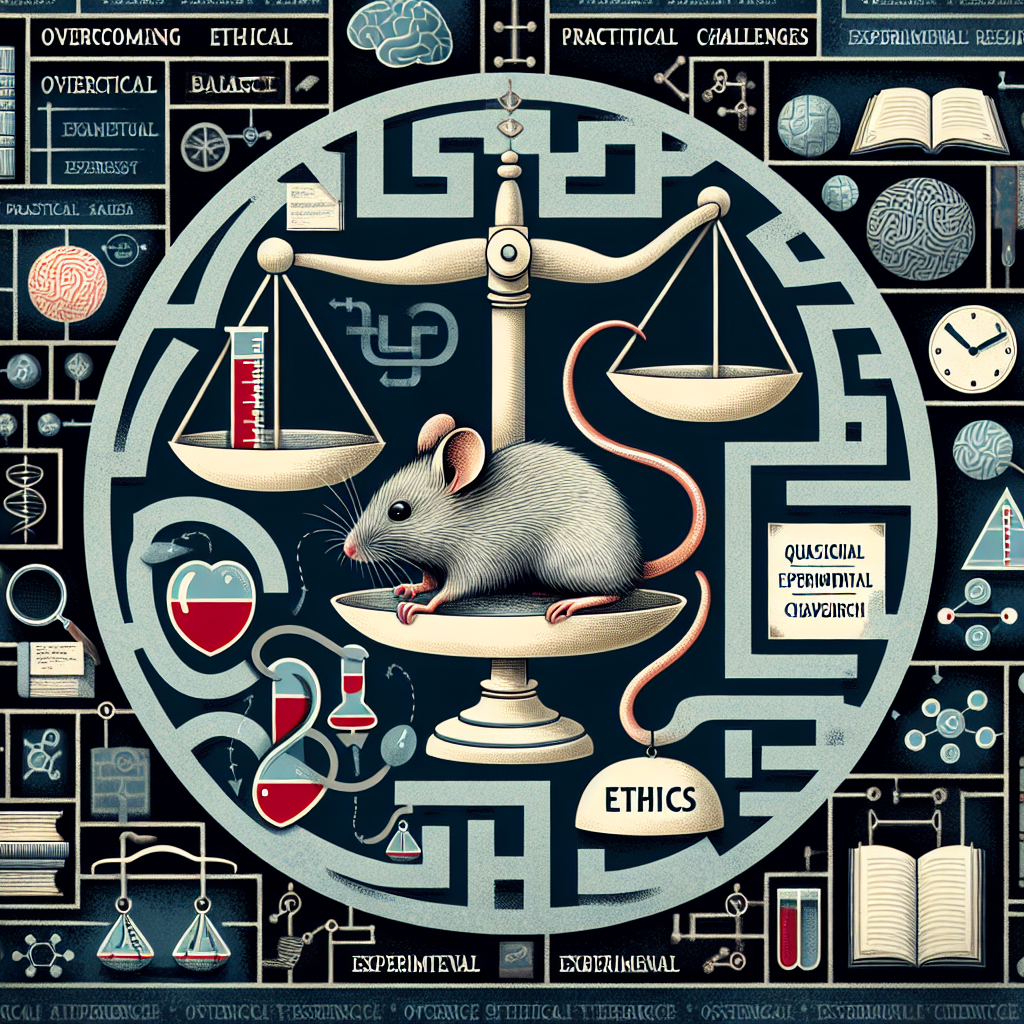
Introduction
In an increasingly complex world where scientific inquiry must navigate ethical considerations and practical constraints, researchers often find themselves at a crossroads. While randomized controlled trials (RCTs) are hailed as the gold standard for establishing causality, they are not always feasible or ethical in every situation. This is where the art and science of quasi-experimental research shine, providing a versatile framework for overcoming ethical and practical challenges. In this article, we’ll explore the multifaceted world of quasi-experimental research, drawing on real-world case studies and insights that illustrate its necessity and efficacy.
Understanding Quasi-Experimental Research
What Is Quasi-Experimental Research?
Quasi-experimental research refers to empirical studies that aim to estimate the causal impact of an intervention without random assignment to treatment and control. It allows researchers to draw meaningful conclusions while working within ethical and practical constraints. Unlike RCTs, where subjects are randomly assigned to groups, quasi-experiments utilize existing groups or conditions, making them particularly valuable in social sciences, education, and public health.
The Importance of Causality
Understanding causality is the cornerstone of effective policy-making and program implementation. Quasi-experimental research serves to bridge the gap between observational studies, which merely associate variables, and RCTs, which impose strict conditions for causation. This design allows researchers to make informed decisions even when RCTs are impractical or unethical.
Overcoming Ethical Challenges
Ethical Constraints in Research
Informed Consent: Many traditional experimental designs require informed consent from participants, which can be difficult when studying sensitive populations (e.g., children, low-income families).
Potential Harm: Ethical guidelines often prevent researchers from exposing participants to potentially harmful treatments or interventions.
- Access to Resources: In a world rife with socioeconomic disparities, randomized trials may inadvertently exclude marginalized groups from benefiting from new interventions, leading to ethical dilemmas.
Case Study: Educational Interventions for Low-Income Students
In a city grappling with educational disparities, researchers wanted to evaluate a tutoring program aimed at improving literacy among low-income students. Randomizing students into treatment and control groups risked denying some children access to vital resources.
To navigate these ethical hurdles, researchers turned to a quasi-experimental design. By implementing the program in one school while using historical performance data from another school as a comparison group, they maintained ethical integrity. The results showed significant improvement in literacy rates, providing compelling evidence of the program’s effectiveness without compromising students’ access to education.
Analysis of the Case Study
This case highlights the importance of quasi-experimental designs in ethical research. By allowing researchers to act within ethical boundaries, such designs ensure that vulnerable populations are not left behind, all while producing valuable data to guide future policies.
Overcoming Practical Challenges
Resource Limitations
Funding Constraints: Many researchers operate within tight budgets that do not allow for the extensive resources required for RCTs.
Time Constraints: Projects often need timely results, making RCTs impractical when time is of the essence.
- Participant Recruitment: In some cases, it may prove difficult to recruit a statistically significant sample for a randomized trial.
Case Study: Health Interventions in Rural Populations
In a rural community where healthcare resources are limited, researchers aimed to analyze the impact of a new community health initiative designed to decrease emergency room visits. Conducting a randomized controlled trial would have been both costly and logistically challenging, given the small population size.
Instead, researchers adopted a quasi-experimental approach by studying healthcare usage before and after the intervention using existing health records from local clinics. The study revealed a 30% decrease in emergency room visits post-implementation, providing valuable insights that paved the way for similar initiatives in other areas.
Analysis of the Case Study
This case exemplifies how quasi-experimental research can effectively overcome practical challenges that hinder traditional experimental designs. By utilizing existing data, researchers not only saved significant resources but also contributed to improved health outcomes in an underserved community.
Mechanisms of Quasi-Experimental Research
Propensity Score Matching
One of the fundamental techniques used in quasi-experimental research is propensity score matching. This statistical method helps researchers create comparable groups based on observed characteristics, thereby minimizing selection bias. By matching participants from different groups, researchers increase the reliability of their findings.
Regression Discontinuity Design
Regression discontinuity design is another innovative approach within quasi-experimental research. This method evaluates the causal effect of an intervention by comparing outcomes for participants just above and below a specific cutoff point. It provides a rigorous analytical framework that enhances causal inference.
Difference-in-Differences
The difference-in-differences technique compares the changes in outcomes over time between a treatment and control group. This approach can provide robust evidence of the effects of policies or interventions while controlling for other factors that may influence the outcomes.
Addressing Common Critiques
The Validity Concerns of Quasi-Experimental Research
One of the prominent critiques of quasi-experimental research is its perceived lack of internal validity. Critics argue that without random assignment, it’s difficult to infer causation. However, by employing techniques such as propensity scoring and matching, researchers can mitigate many of these concerns.
The Role of Statistical Techniques
Statistical techniques have come a long way. Modern analytics now allow researchers to control for confounding variables, making quasi-experimental designs more reliable than ever. This evolution in data analysis strengthens the argument for leveraging these methods in various fields.
The Future of Quasi-Experimental Research
The Impact of Technology
Advancements in technology, particularly in data collection and analysis, are making quasi-experimental research increasingly robust. Data from social media, healthcare records, and online behaviors can be leveraged to enhance the design and implementation of studies.
A Call for Greater Utilization
As we move forward, the academic community and policymakers must recognize the immense potential of quasi-experimental research. From addressing pressing social issues to informing healthcare policies, its applications are limitless.
Conclusion
Overcoming ethical and practical challenges: the case for quasi-experimental research demonstrates the feasibility and necessity of this method within scientific inquiry. As we have seen through various case studies and examples, quasi-experimental research offers a balanced approach that allows valuable insights to emerge without sacrificing ethical integrity or practicality. As researchers, stakeholders, and policymakers, we must advocate for this versatile model in order to navigate the complexities of modern research.
FAQs
1. What is the main advantage of quasi-experimental research over randomized control trials?
Quasi-experimental research allows for the ethical exploration of interventions in situations where random assignment may not be feasible or ethical, making it valuable for addressing real-world issues.
2. How can researchers ensure the validity of quasi-experimental findings?
Researchers can employ statistical techniques, including propensity score matching and regression discontinuity design, to minimize confounding factors and enhance internal validity.
3. Are quasi-experimental studies as rigorous as randomized controlled trials?
While quasi-experimental designs may carry some limitations regarding internal validity, advancements in statistical methodologies are closing this gap, allowing for rigorous and reliable conclusions.
4. Can quasi-experimental research be applied in all fields?
Yes! Quasi-experimental research can be applied across various domains, including education, public health, and social sciences, making it a versatile tool for researchers.
5. How can I start conducting quasi-experimental research?
Familiarize yourself with different designs and methodologies. Begin by identifying a research question that poses ethical and practical challenges, then align your methodological approach accordingly.
With its unique ability to overcome ethical and practical challenges, quasi-experimental research remains a powerful tool for understanding complex social issues, policy impacts, and public health interventions, encouraging a future that favors informed decision-making grounded in robust evidence.

















